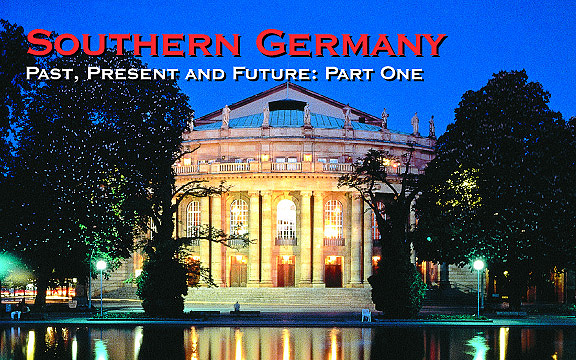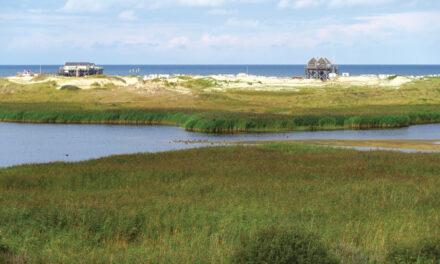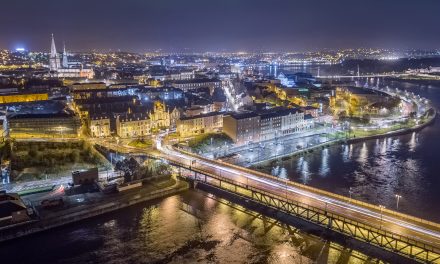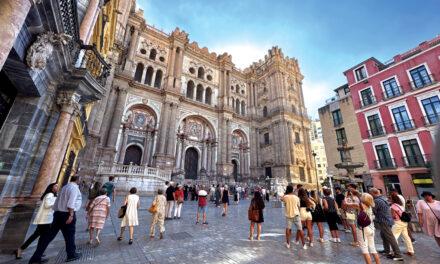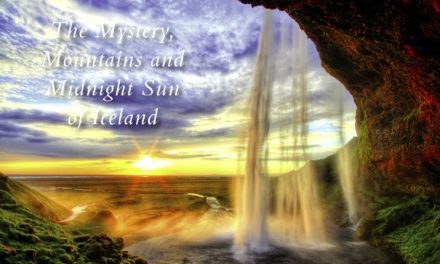Southern Germany
Past, Present and Future: Part One
Published in the Summer 2007 Issue of Canadian World Traveller
By Greg James
Photos: German National Tourist Office (www.cometogermany.com)
Spending a week in Southern Germany is like being in a fantastic time machine that whisks you back to medieval towns, castles and monasteries, then forward to space-age architecture, high-tech industries and avant-garde artistic movements.
With an emphasis on art and culture, the seven stops on my itinerary would include the picturesque university town of Heidelberg; the UNESCO World Heritage Site of Maulbronn Abbey; the often-overlooked city of Stuttgart, home of Mercedes-Benz; the charming town of Ulm, birthplace of Albert Einstein; the Bavarian capital city of Munich, famous for its Oktoberfest; and last but not least, the City of Nuremberg, which I discovered has much more to offer than its notoriety as the site of many infamous events during the era of the Third Reich.
The first installment of our exciting tour takes us across Germany’s southwestern state of Baden-Württemberg, as we visit Heidelberg, Maulbronn Abbey and the state capital Stuttgart.
 An Historic Student Town
An Historic Student Town
As we made our way along the Neckar, the winding river that runs through Heidelberg, our guide tells us that since the founding of the world-famous university in 1386, its student body has always been approximately one quarter of the population. Today, more than 28,000 of Heidelberg’s total population of 135,000 are students.
We crossed the river via one of the newer bridges and started our invigorating hike up “Philosophen Weg”, a winding path bordered by elegant homes on the lower stretch and exotic plant life higher up. This is where poets, thinkers, and scholars such as Heidegger, Goethe and Jaspers used to stroll. The panoramic view of the Castle and Old Town on the other bank of the river was truly breathtaking and made every step of the climb worthwhile.
 A quick descent down a much steeper path brought us to the historic Old Bridge and the Bridge Gate leading to the myriad of cafés, pubs, restaurants and shops that line the narrow streets of the Old Town. The aromas of the cakes and torts proved too much of a temptation, so we stopped for a quick delectable bite at one of the cafés.
A quick descent down a much steeper path brought us to the historic Old Bridge and the Bridge Gate leading to the myriad of cafés, pubs, restaurants and shops that line the narrow streets of the Old Town. The aromas of the cakes and torts proved too much of a temptation, so we stopped for a quick delectable bite at one of the cafés.
Majestic Ruins
After making another stop at a chocolate shop to buy a “Student Kiss”, we headed for the nearby funicular that would take us up to the ruins of Heidelberg’s famous castle. We used our “Heidelberg Card”, which is good for two to four days, depending on your needs. The cost per day is quite a bargain, as the card gets you into almost all the tourist sites for free or at a drastic reduction. It’s also good for all types of local transport.
For five centuries the Castle was the majestic residence of the Electors Palatine. The construction lasted over 400 years. Today, the lofty site consists of well-preserved ruins of ramparts, outbuildings and palaces in all styles, from Gothic to High Renaissance.
Our knowledgeable guide brought its colourful history alive by relating tales of palace intrigue. If you don’t make it up Philosopher’s Walk on the opposite bank on the river, you must visit the Castle, if only for the magnificent vista of the town and the river.
Music and Food
That night, we dined at the Guldenen Schaf Hotel and Restaurant on Hauptstrasse, where the owner Dr. Kischka entertained us with his collection of truly unusual ancient wind, string, and percussion instruments, prior to the serving of each course. The “special menu” was chosen to reflect the era when each instrument was invented. What a fitting way to end our short stay in Heidelberg!
 Maulbronn Monastery
Maulbronn Monastery
“Founded in 1147, the Cistercian Maulbronn Monastery is considered the most complete and best-preserved medieval monastery complex north of the Alps.
Surrounded by fortified walls, the main buildings were constructed between the 12th and 14th centuries. The monastery’s church, built in the transitional Romanesque-Gothic style, had significant influence on the spread of Gothic architecture over much of northern and central Europe.”
“The water management system at Maulbronn, with its elaborate network of drains, irrigation canals and reservoirs, is exceptional.” That’s how UNESCO described the Maulbronn Monastery when it was added to the exclusive list of World Heritage Sites. I couldn’t have said it better!
 A Mayor’s Welcome
A Mayor’s Welcome
Our visit to this impressive site was indeed very special, as Mayor Andreas Felchle was there to officially welcome us is to his town, which surrounds the monastery. To our surprise, he then took us on a walking tour of the entire site! This was a good way to work up an appetite for the sumptuous lunch awaiting us at the Klosterkeller, located in one of the historic buildings facing the monastery’s huge public square.
I highly recommend a visit to this site, which can easily be managed as a day trip from either Heidelberg or from our next stop, Stuttgart.
Surprising Stuttgart
Stuttgart is well known to international soccer fans as one of the German cities that played host to the 2006 FIFA World Cup.
What most people don’t know is that Stuttgart is also the site of Germany’s first subdivision to be designed by the original members of the Bauhaus School of Architecture back in 1927, even before WWII!
 Avant-garde Buildings
Avant-garde Buildings
The “Weissenhofsiedlung” subdivision derives its place in architectural history from the participation of architects who at the time were considered extremely avant-garde but who are today among the great masters of the 20th century: Ludwig Mies van der Rohe, Walter Gropius, Le Corbusier, Hans Scharoun and others.
The ultramodern duplex designed by Le Corbusier is now a museum open to the public. Anyone with an interest in modern architecture should not miss visiting the Weissenhof Museum and the rest of the remarkably intact and well-preserved subdivision.
 Antique Cars
Antique Cars
Another asset of Stuttgart is that it is the home of the remarkably Mercedes-Benz Museum, as well as being the legendary car manufacturer’s international headquarters. The museum itself is a modern organic glass and steel structure displaying around 100 cars.
Admission is free and the cars span the history of the automobile, for it was near this site that the very first gasoline-powered automobiles were built.
Culture Par Excellence

Anyone who thinks that this city is lacking in cultural activities should check out Stuttgart’s calendar of events. Opera, live theatre, symphony concerts and ballet are offered to local and visiting fans all year round.
We were fortunate to get tickets to see the Stuttgart Ballet Company perform and met the Canadian-born artistic director, Reid Anderson, who began his dancing career with this very company. He directed his first company, the Ballet British Columbia, for two years and then in 1989, moved to Toronto to direct the National Ballet of Canada.
When the opportunity arose in 1996 to direct his old alma mater, he was happy to move back to Stuttgart. Under his direction, the company’s reputation and avid audiences continue to grow.
To Be Continued…
This is Part One of a two-part article on Southern Germany. We invite you to join us on our visits to Ulm, Munich and Nuremberg, in the fall issue of Canadian World Traveller.
If you plan to visit Southern Germany:
Contact the German National Tourist Office
Tel.: 416-968-1685 or 1-877-315-6237
Email: info@gnto.ca
Websites: www.germany-tourism.de
and www.cometogermany.com
Info and Where to Stay in Heidelberg
City of Heidelberg
Website: www.cvb-heidelberg.de
NH Hoteles Heidelberg
Website: www.nh-hotels.com
Info on Maulbronn Abbey
Town of Maulbronn
Website: www.maulbronn.de
Info and Where to Stay in Stuttgart
City of Stuttgart
Website: www.stgt.com
Steigenberger Hotel Stuttgart
Website: www.stuttgart.steigenberger.de
Getting There:
Lufthansa Airlines
Website: www.lufthansa.com

